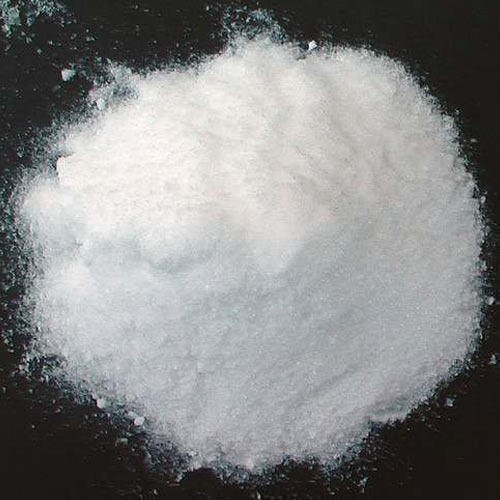Have you ever heard of a chemical so powerful that it was once used in medicine but later banned due to its toxicity? That’s exactly the story of Mercury (II) Chloride. It’s a compound that holds both historical importance and scientific value, but also comes with significant dangers.
What is Mercury (II) Chloride?
Mercury (II) Chloride is a chemical compound made of mercury and chlorine. It’s also known by the names corrosive sublimate or bichloride of mercury. In its pure form, it appears as a white crystalline solid that looks harmless but is highly toxic.
Chemical Formula and Structure
-
Chemical Formula: HgCl₂
-
Structure: The molecule consists of one mercury atom bonded with two chlorine atoms in a linear arrangement.
This simple-looking compound hides a complex and hazardous nature.
Physical Properties
-
Appearance: White crystalline solid
-
Taste & Odor: Odorless but very bitter in taste (not safe to test!)
-
Solubility: Moderately soluble in water, highly soluble in alcohol and ether
-
Melting Point: 277 °C
-
Boiling Point: 302 °C (decomposes before boiling)
These properties made it useful in different industries, especially in the past.
Chemical Properties
-
Mercury (II) Chloride is highly reactive with bases, forming complex compounds.
-
It reacts with ammonia to form a white precipitate.
-
It is stable under normal conditions but decomposes at high temperatures, releasing toxic mercury vapors.
Occurrence in Nature
Naturally, Mercury (II) Chloride does not occur abundantly. Most of it is produced industrially by combining elemental mercury with chlorine gas. In nature, small traces can be found where mercury deposits exist.
Methods of Preparation
-
Laboratory Method:
-
By passing chlorine gas over mercury or mercury oxide.
-
-
Industrial Method:
-
Direct reaction of mercury with chlorine.
-
These processes produce the crystalline white substance widely used in past industries.
Uses of Mercury (II) Chloride
Historical Applications
-
Used in medicine as a disinfectant and preservative.
-
Applied in photography and tanning leather.
-
Once popular as an antiseptic for wounds.
Modern Industrial Uses
-
Employed in organic synthesis as a catalyst.
-
Used in small-scale chemical laboratories for experiments.
However, its uses today are very limited due to its toxicity.
Mercury (II) Chloride in Medicine (Past vs Present)
In the 18th and 19th centuries, this compound was a common medical treatment for syphilis and skin infections. Doctors prescribed it without knowing the long-term harm.
Today, it is banned in medicine due to its poisonous effects, replaced by safer alternatives.
Toxicity and Health Hazards
-
Short-term exposure: Causes nausea, vomiting, abdominal pain, and burns in the mouth or throat.
-
Long-term exposure: Can damage kidneys, liver, and nervous system. Prolonged contact may lead to death.
This is why strict safety precautions are essential when handling Mercury (II) Chloride.
Environmental Impact
When released into the environment, this compound contaminates soil and water, posing serious risks to fish, birds, and humans. Mercury pollution is a global issue, and Mercury (II) Chloride plays a role in it.
Safety Precautions
-
Always handle in well-ventilated areas.
-
Wear gloves, masks, and protective clothing.
-
Store in tightly sealed containers, away from sunlight and moisture.
Mercury (II) Chloride vs Other Mercury Compounds
-
Mercury (I) Chloride (Calomel): Less toxic but still dangerous.
-
Mercury Oxide: Used in some batteries but regulated due to toxicity.
Mercury (II) Chloride is one of the most toxic among these.
Regulations and Restrictions
International laws like the Minamata Convention on Mercury have restricted or banned the use of Mercury (II) Chloride in many countries. Disposal must follow hazardous waste protocols.
Future Outlook
The future lies in safer alternatives. Scientists are developing substitutes for Mercury (II) Chloride in industry and research, reducing environmental and health risks.
Conclusion
Mercury (II) Chloride is a compound that reminds us of the fine line between usefulness and danger. Once praised as a medical solution, it is now recognized as a toxic hazard. While its industrial importance is undeniable, its risks far outweigh its benefits in most cases.
FAQs
Q1: Why was Mercury (II) Chloride used in medicine?
It was used as a disinfectant and treatment for infections before its toxicity was fully understood.
Q2: Is Mercury (II) Chloride still used today?
Yes, but only in limited industrial and research applications under strict safety rules.
Q3: How dangerous is Mercury (II) Chloride?
Even small amounts can be fatal if ingested or inhaled, making it extremely dangerous.
Q4: Can Mercury (II) Chloride contaminate water?
Yes, it dissolves in water and can poison aquatic life.
Q5: What replaced Mercury (II) Chloride in medicine?
Safer antibiotics and antiseptics have taken its place.







